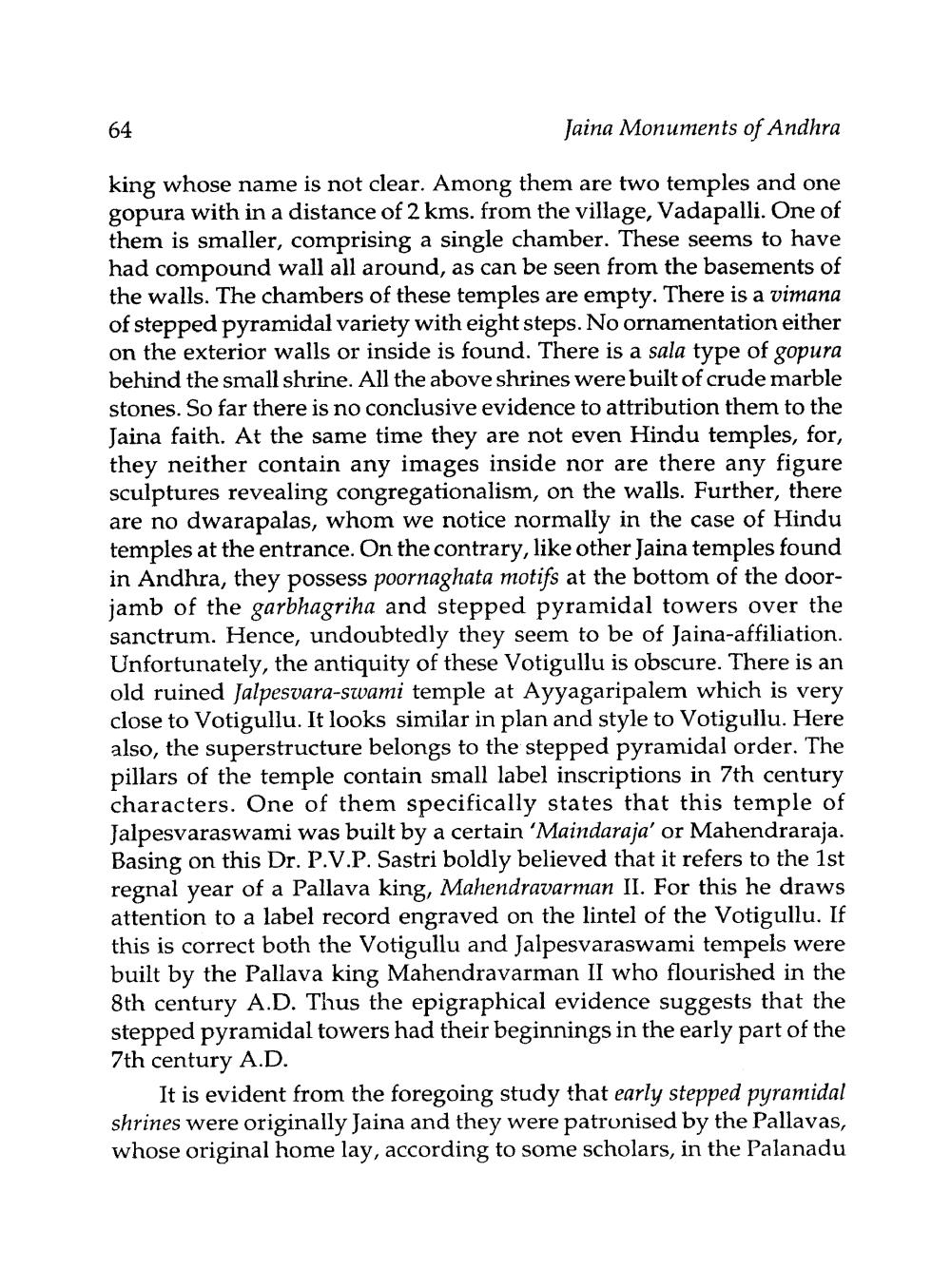________________
Jaina Monuments of Andhra
king whose name is not clear. Among them are two temples and one gopura with in a distance of 2 kms. from the village, Vadapalli. One of them is smaller, comprising a single chamber. These seems to have had compound wall all around, as can be seen from the basements of the walls. The chambers of these temples are empty. There is a vimana of stepped pyramidal variety with eight steps. No ornamentation either on the exterior walls or inside is found. There is a sala type of gopura behind the small shrine. All the above shrines were built of crude marble stones. So far there is no conclusive evidence to attribution them to the Jaina faith. At the same time they are not even Hindu temples, for, they neither contain any images inside nor are there any figure sculptures revealing congregationalism, on the walls. Further, there are no dwarapalas, whom we notice normally in the case of Hindu temples at the entrance. On the contrary, like other Jaina temples found in Andhra, they possess poornaghata motifs at the bottom of the doorjamb of the garbhagriha and stepped pyramidal towers over the sanctrum. Hence, undoubtedly they seem to be of Jaina-affiliation. Unfortunately, the antiquity of these Votigullu is obscure. There is an old ruined Jalpesvara-swami temple at Ayyagaripalem which is very close to Votigullu. It looks similar in plan and style to Votigullu. Here also, the superstructure belongs to the stepped pyramidal order. The pillars of the temple contain small label inscriptions in 7th century characters. One of them specifically states that this temple of Jalpesvaraswami was built by a certain 'Maindaraja' or Mahendraraja. Basing on this Dr. P.V.P. Sastri boldly believed that it refers to the 1st regnal year of a Pallava king, Mahendravarman II. For this he draws attention to a label record engraved on the lintel of the Votigullu. If this is correct both the Votigullu and Jalpesvaraswami tempels were built by the Pallava king Mahendravarman II who flourished in the 8th century A.D. Thus the epigraphical evidence suggests that the stepped pyramidal towers had their beginnings in the early part of the 7th century A.D.
64
It is evident from the foregoing study that early stepped pyramidal shrines were originally Jaina and they were patronised by the Pallavas, whose original home lay, according to some scholars, in the Palanadu




